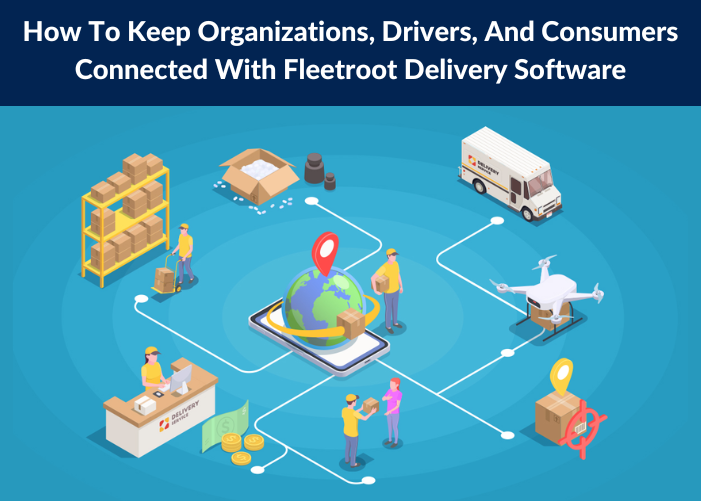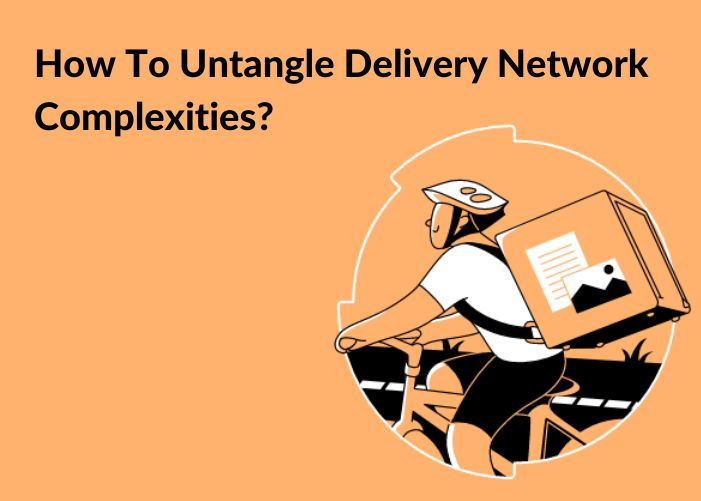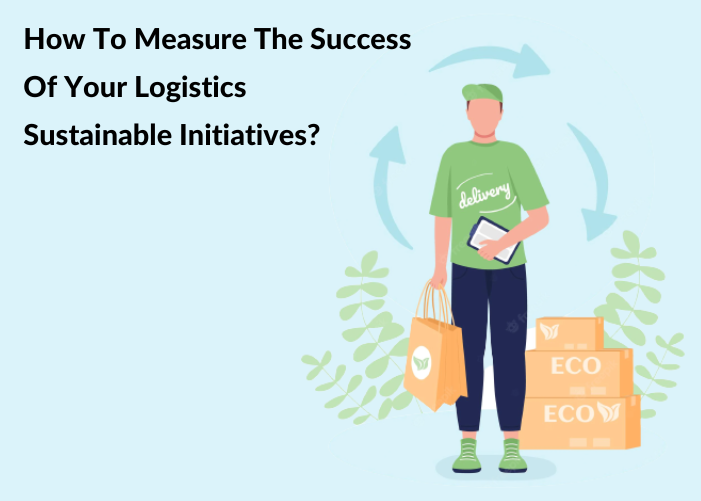1) Managing deliveries in the modern, digital age
Order fulfillment in today’s complex world of global logistics is not just about managing one (isolated) part of the supply chain, but holistically managing the entire supply chain with ample detail paid to all the stakeholders.
Right from the procurement of raw materials, factory operations, warehouse management, and distributors, to the customer’s delivery address. As you might expect, it includes a variety of elements such as organizations, technology, various teams, vehicles, last-mile delivery, and the end customer.
~~ With today’s delivery volumes, led by the Ecommerce behemoth, disparate solutions simply won’t suffice. Only delivery management software that unifies all elements of a delivery operation, as well as its multiple stakeholders, will be useful for companies. ~~
With E-commerce and the increasingly popular home-delivery model (spurred by the pandemic), the competition to win the customer is immense. Therefore, it becomes imperative for retail brands and logistics companies to provide a highly satisfying—preferably delightful—customer experience with regard to their order delivery. Choosing the right last mile delivery software is the first step in accomplishing this.
Often, delivery-software functions as a “point solution,” i.e. it covers one, or some, aspects of the delivery process. For example, some may cover route planning, whereas others may offer order management.
Well, such disparate solutions really don’t cut it anymore. Delivery management software must bring together all aspects of the process under a single platform.
Importantly, all the various stakeholders – from companies to the logistics teams through to the consumer—must also be connected via such a system so as to provide 100% transparency and visibility. Unless your delivery tracking software is able to achieve that, you won’t have an efficient system.
However, given how complex global supply chains have become, this is easier said than done. Add to it the rapid changes that come with scale, and it is hardly an easy task!
~~ Delivery Management Software: Core Principles ~~
- Digitize: Companies across industries now deploy technologies across their operations to improve efficiency, reduce costs, and increase profitability. Delivery technology is a crucial part of this change and a great example of the benefits of digitization
- Integration: Becomes possible due to digitization. Various systems used by stakeholders along the supply chain can now communicate with each other in real time. This enables sharing of data, information, and better insight. It would be best if you had intelligent delivery-management software to fit into all of this and get an end-2-end view of the entire order-delivery process
- Automation: This is one of the most significant benefits of intelligent delivery technology. Manual processes (e.g. driver assignment) that took up valuable time & resources are now automated, thus saving cost and improving efficiency.
3) What are the benefits of Fleetroot Delivery Software? How does it integrate all the relevant stakeholders?
As mentioned above, your delivery software must integrate all aspects and parties involved in the supply chain. Let us look at some features and benefits of Fleetroot Delivery Software in this regard:
- Route optimization: Quite naturally, this is an important one. This feature uses a slew of advanced algorithms to balance out numerous elements (e.g. traffic, weather, consumer variables, number of stops on a route, reverse pickups, driver and vehicle availability, package size, etc.) to come up with the most efficient route, number of stops, its sequence (etc.)
- Integrations: Another important feature, this allows the systems of all relevant stakeholders – from suppliers to warehouse teams to drivers through to the end customer – to gain visibility into the delivery process. All parties are, thus, connected in real time to the progress of their goods.
- Automated dispatch: This is critical since it gives logistics teams complete end-2-end visibility of the entire delivery operation. Automatic dispatch saves time, resources, and cost while optimizing deliveries
- Real-time visibility & tracking: Provides the all-important visibility as drivers move through their daily delivery schedules. Helps keep logistics teams, drivers and end-customers stay connected in real-time. Any changes or updates to the planned schedules (e.g. due to poor weather) can be immediately communicated. Or, if the customer is unable to receive the package at the agreed delivery window, he could communicate the same to the driver/company.
- Automated scheduling & re-scheduling: A must-have feature since the original delivery window could require re-scheduling for various reasons, either from the deliverer’s side or the end customer. In fact, this is another critical tool for ensuring that companies, delivery drivers, and end customers stay connected in real time.
~~ Managing & Caring For Delivery Drivers ~~
With delivery models expanding rapidly, the gig-economy growing, and last-mile efficiency becoming a leading route to achieving Customer Satisfaction, companies, and brands are finally paying the requisite attention to the team member that was almost always short-changed i.e. the driver!
However, driver retention is a result of sound company policies, including training, onboarding, fair pay, safe working conditions, refresher training (etc.)
Relatedly, providing them with modern tools – like Fleetroot Delivery Software – to facilitate easier deliveries greatly influence their job satisfaction as well as your last-mile efficiency. ~~
- Real-time communication: How can the relevant stakeholders stay connected without proper communication lines in real-time? Fleetroot’s last-mile delivery software facilitates real-time communication through SMS, in-app notifications, and calls to ensure everyone is connected in real-time. This also helps in managing unplanned situations or last-minute changes (e.g. an accident that has caused an enormous traffic snarl causing inordinate delay). Such prompt communication – and, solutions- keep customers happy.
- Reports and dashboards: Data and information provide insight. Fleetroot’s delivery software offers actionable insight for logistics teams. Since each transaction is recorded as a data point across the entire gamut of delivery operations, it provides a holistic viewpoint and understanding of the process.
- Fulfillment options: Today’s customer now demands – not just expects! – multiple options when it comes to delivery times, modes, and payment methods. Plus, all the options, and costs thereof, must be presented clearly at the appropriate time. The best delivery management systems clearly display the multiple options in a clear and concise manner.
- Customer Satisfaction: As always, the ultimate goal for all businesses. No matter what function or responsibility you have, the effort must be unidirectional i.e. to keep the customer satisfied. And, in today’s delivery-led businesses that deliver to online customers, it has become even more important for companies to focus on the last-mile experience.
Conclusion: As is evident, using a leading modern tech tool like Fleetroot Delivery Software is critical to achieving order-fulfillment success by keeping all key stakeholders, including organizations, drivers, and consumers, connected.
How To Manage Delivery Operations With Fleetroot Delivery Software
1) To begin with, what does “managing Delivery Operations” mean?
The process that ensures goods are efficiently, safely, and economically moved from point A to B to meet customer needs is called “managing Delivery Operations”. Other terms to describe it include “Delivery Management”, “Fleet Dispatch” or “Fleet Management”. With customer needs having rapidly changed – and, become increasingly demanding! – in recent years, Delivery Management has become most important.
The objective of this article is to highlight how modern delivery software like Fleetroot has become an invaluable asset for companies in managing their delivery operations.
2) Whose responsibility is the management of Delivery Operations?
The Logistics Manager is tasked with the responsibility of delivery management. Other designations include Delivery Manager and Dispatch Manager.
Logistics Managers oversee all delivery-related operations, including driver dispatch, fleet management, warehouse coordination (etc.). And, depending on the scale of the business, their roles expand, too. For complex operations of scale that use software and elaborate MIS, they also oversee other related aspects such as supply-chain management, 3PL coordination, order delays, and reasons/solutions thereof (etc.)
~~ Delivery Manager – Roles & Responsibilities ~~
- Head teams to help clients understand, install, setup, and use technology products to improve their delivery operations (e.g. Delivery Software)
- Work and collaborate with end-users and stakeholders to maintain transparency
- Constantly develop improvements & solutions to meet end-goals
- Conduct regular training
3) Why has Delivery Management become such a buzzword?
Significant changes in consumer demand and expectations, best practices for order fulfillment, constant pressure on delivery times, a frenetic global supply-chain activity that runs 24*7, and immense competitive pressure have created an “all-roads-lead-to-Rome” scenario, where, all such company functions ultimately run through its delivery operations. Therefore, to maintain customer satisfaction and achieve company profitability, it is imperative that firms optimize their delivery operations.
Given the complexity of scale and tasks in managing delivery operations, an important tool in today’s automated Delivery Management Software is one that is fully equipped with AI and ML-led tech tools and powerful algorithms.
4) Do all types of businesses need a DMS?
Regardless of the type or size of a business, whether a client or a logistics firm, smooth delivery operations is worth their weight in gold!
Today’s demanding consumers – used to the now staple diet of rapid deliveries like Same-day deliveries, and 24-hr deliveries – have meant that businesses have had to adapt to the “Amazon-isolation” of deliveries. Cheaper, faster, more flexible, more options…the parameters of a “satisfactory order-fulfillment experience” are several.
DMS uses its significant capabilities and tools to balance out all the factors mentioned above (and, more) to provide you with the requisite control of your delivery operations and also give you ample insight. This helps Logistics Managers make better-informed decisions in the future, thus improving the overall efficiency and profitability of the business.
4) What is Delivery Management Software?
Anyone that runs a delivery operation – whether it be for E-commerce, high-value products, B2B supplies, groceries, frozen products, hazardous materials, or medical supplies – will tell you how challenging it is to plan routes, organize fleet drivers and vehicles, and manage resources that are costly while at the same time always keeping the end goal in mind i.e. successfully delivering each order.
This is where DMS is your go-to solution. It automates the delivery process from beginning-till-end. Whether a small business or a global one, DMS will optimize delivery routes, minimize costs, and improve delivery efficiency. End result? Customer Satisfaction.
From a leadership perspective, by increasing the efficiency of delivery operations, team leadership becomes freed of the time otherwise spent on managing deliveries and can devote time to other duties.
~~ Important Factors When Choosing a DMS ~~
Select your DMS carefully – it’s a waste of time & money if the software doesn’t improve your operation significantly! Some key considerations are mentioned below:
- What kind of Customer Support will you get?
- Check how often the software provides updates e.g. when new roads are built. This is crucial for continued smooth operations
- Route-optimization software like Fleetroot Delivery Software identifies the most efficient routes by balancing out all variables. You save money( e.g. reduce fuel costs) while improving efficiency (e.g. improved driver performance)
5) What are the benefits of using a leading DMS like Fleetroot?
Let’s look at some highlights of how Fleetroot Delivery Software helps firms in managing their delivery operations efficiently.
- Route Optimization for improved efficiency: With route optimization, you can develop the most efficient routes for your delivery drivers – and, all within a few minutes! Not only does it allow you to take a greater number of orders but it also lets you take last-minute bookings, or even allows customers to make late changes in their order details.
Most importantly, DMS improves the efficiency of your operations since it uses the most efficient routes – remember, that the most efficient isn’t the cheapest, or fastest, or shortest. It is the one that balances out all aspects of a delivery operation and thus, reduces costs and improves operational efficiency. This, in turn, leads to Customer Satisfaction, repeat business, and company profitability.
- 100% visibility: DMS provides central logistics teams with complete visibility as the drivers move out into the field to execute their daily deliveries. Real-time location tracking shows their exact location. This also helps in supporting the drivers with updated information or re-directing their routes (e.g. in case of traffic congestion due to roadblocks) or if a customer requests a change in the delivery address or location at the last minute.
Such visibility provides logistics teams – and, drivers – with peace of mind, and also improves the safety of the entire operation.
- 100% transparency: Extending the point above, today’s DMS technology brings the entire delivery operation process – and its eco-system – online. This is a great advantage since all stakeholders are connected via collaborative MIS and related systems so that everyone can operate with 100% transparency
- Fleetroot is a robust tech tool: Fleetroot is a modern-day last-mile delivery software that uses advanced algorithms and the latest tech tools like AI & ML to come up with the best routes, analyze vast amounts of data to extract actionable insight, and provide complete transparency and real-time information exchange between all the stakeholders.
- Achieving Customer Satisfaction: Well, as always this is where the buck stops, right? Whether you are creating and maintaining, happy customers! If not, you can hardly hope to run a sustainable, profitable concern.
In addition to the numerous optimizations mentioned above, the DMS enables live communication between logistics teams, drivers, and the end customer. This goes a long way in keeping customers updated, and calm, about their packages. ETA, delays, changes to original delivery details (etc.) can all be communicated both ways.
Conclusion: As is evident, using advanced delivery software like Fleetroot helps companies to keep customers satisfied, by improving the order-fulfillment experience.




